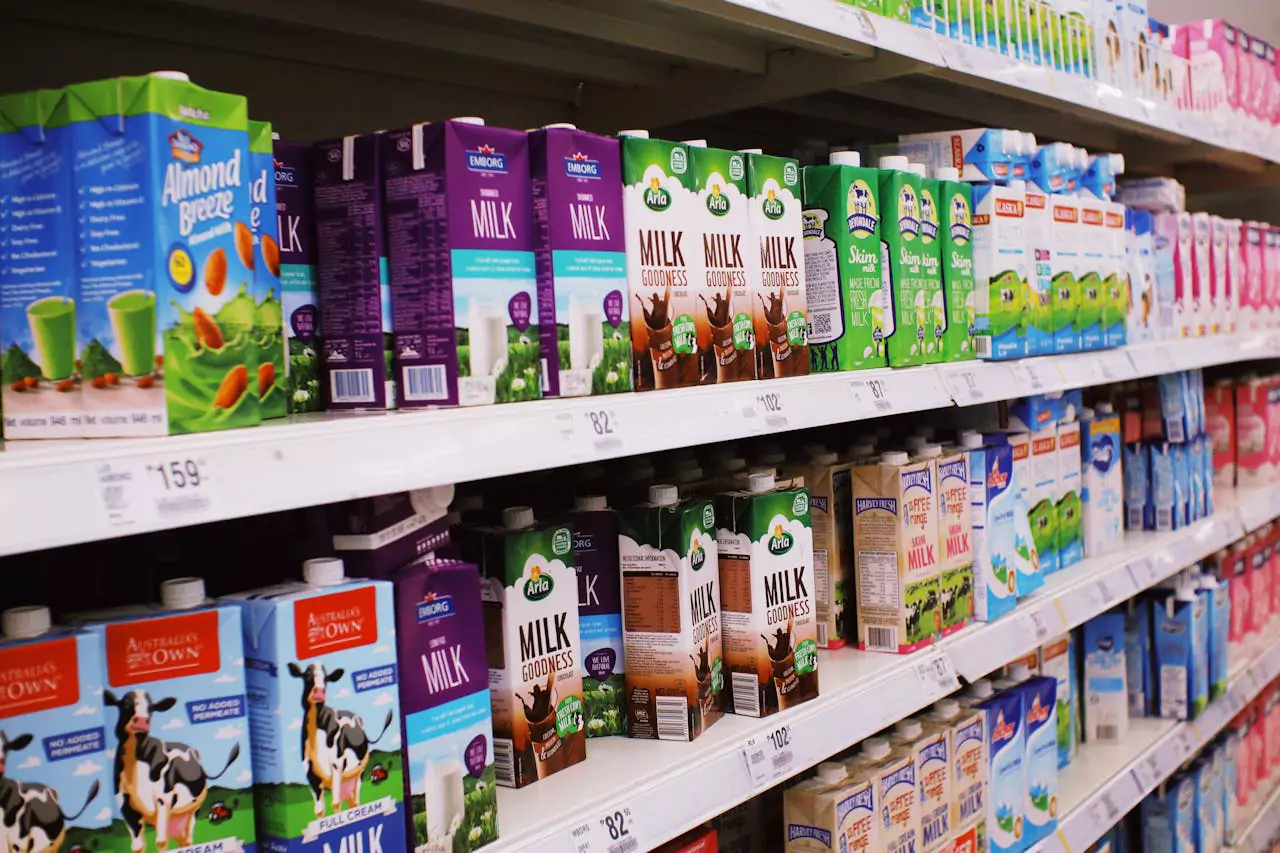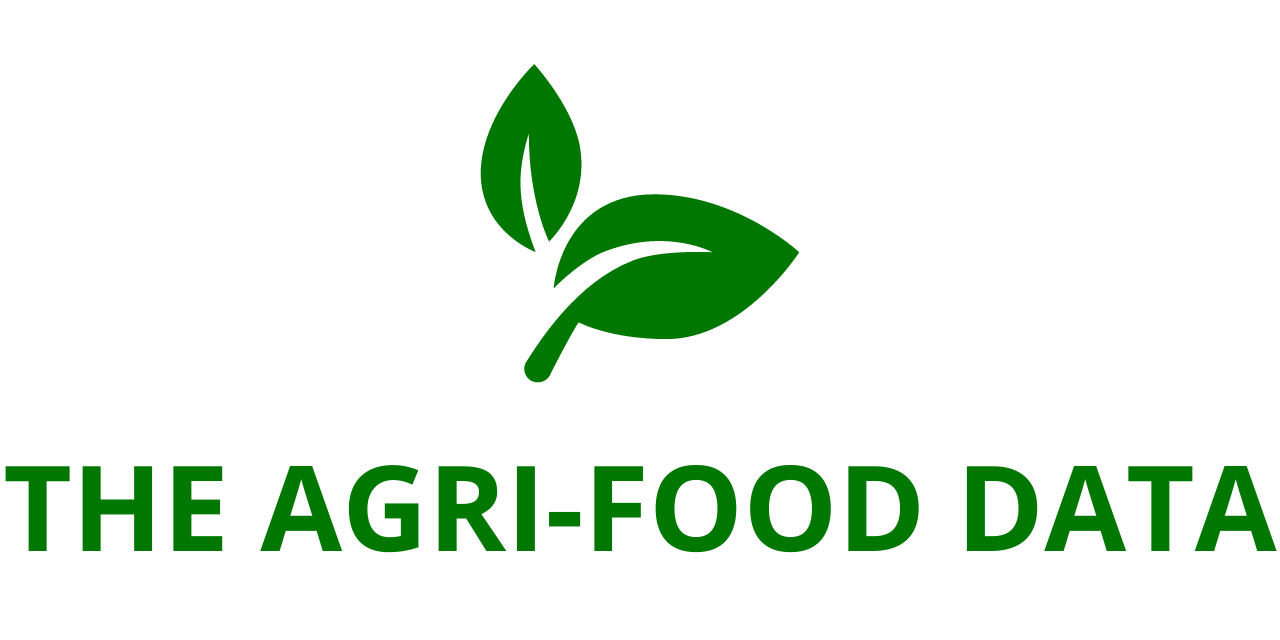
The “Flavored Milk Market Size and Share Analysis – Growth Trends and Forecast Report 2025-2033″ has been added to ResearchAndMarkets.com’s portfolio, highlighting significant growth projections for the industry.
The flavored milk market is forecasted to grow from US$ 55.11 billion in 2024 to US$ 102.86 billion by 2033, registering a compound annual growth rate (CAGR) of 7.18% from 2025 to 2033. This robust growth is attributed to various factors, including increasing health consciousness, innovations in packaging, strategic collaborations within the dairy industry, advancements in research and development (R&D), rapid expansion of e-commerce, and rising disposable incomes worldwide.
Growth Drivers for the Flavored Milk Market
Innovative Packaging Techniques Driving Consumer Interest
Packaging plays a pivotal role in influencing consumer purchase decisions, particularly in the fast-moving consumer goods (FMCG) sector. Within the flavored milk market, creative packaging serves multiple purposes, enhancing visual appeal on store shelves while ensuring product safety and extended shelf life. To gain a competitive edge, manufacturers are investing in eco-friendly materials, vibrant designs, and ergonomic packaging.
Features such as resealable caps, single-serving packaging, and transparent panels are becoming increasingly common, offering practical benefits that resonate with environmentally conscious consumers. These innovations enhance convenience, reduce waste, and align with sustainability goals, further driving consumer engagement and boosting market growth.
The Transformational Impact of E-commerce
The digital revolution has fundamentally reshaped retail dynamics, with e-commerce emerging as a dominant distribution channel for flavored milk. Consumers now prefer the convenience of online shopping, gaining access to a wide variety of products without geographical constraints. As a response, flavored milk producers are forming strategic partnerships with leading e-commerce platforms to enhance market reach and visibility.
Online retailing also facilitates direct engagement between brands and consumers, enabling manufacturers to receive valuable customer feedback, launch exclusive online product lines, and introduce limited-edition flavors. The convenience of doorstep delivery has made flavored milk more accessible to consumers, leading to increased sales and brand loyalty in a highly competitive landscape.
Rising Health Consciousness Among Consumers
The global shift toward healthier food and beverage (F&B) choices has significantly influenced the flavored milk market. Consumers are becoming more discerning about the nutritional value of their dietary intake, favoring products that offer both taste and health benefits. Manufacturers are responding by fortifying flavored milk with essential nutrients such as calcium, iron, and vitamin D to enhance its health appeal.
This trend has led to a surge in demand for fortified and functional flavored milk, especially among younger demographics and fitness-conscious individuals. The introduction of low-fat, high-protein, and sugar-reduced variants has further contributed to market expansion, ensuring that flavored milk remains a popular choice in the growing health-conscious consumer segment.
Challenges Facing the Flavored Milk Market
Competition from Alternative Beverages
The flavored milk market faces stiff competition from a variety of alternative beverages, including fruit juices, energy drinks, and plant-based milk alternatives such as almond, soy, and oat milk. These beverages often boast unique health benefits, such as antioxidant properties, low-calorie content, or digestive health support, making them attractive to health-conscious consumers.
Additionally, the rising demand for functional beverages—such as probiotic drinks and hydration-enhancing beverages—has further intensified market competition. As consumer preferences shift, flavored milk manufacturers must innovate and diversify their product offerings to remain competitive and retain market share.
The Impact of Lactose Intolerance
Lactose intolerance remains a significant challenge for the dairy-based flavored milk industry, particularly in regions with high lactose-intolerant populations, such as Asia and Africa. Individuals who experience digestive discomfort due to lactose consumption often seek dairy-free alternatives, reducing the potential consumer base for traditional flavored milk products.

However, this challenge has also opened new avenues for the industry. The increasing popularity of plant-based beverages, including almond, oat, and soy-based flavored milk, has created opportunities for dairy companies to diversify their product lines. By catering to lactose-intolerant and vegan consumers, manufacturers can tap into a broader market while addressing evolving dietary preferences.
Segmental Trends in the Flavored Milk Market
- Rising Demand for Long-Lasting Flavored Milk: Consumers are increasingly seeking extended-shelf-life dairy products, boosting demand for UHT (ultra-high temperature) flavored milk.
- Chocolate Flavor Dominance: Chocolate remains the most popular flavored milk variant globally, appealing to consumers across all age groups.
- Powdered Flavored Milk Growth: The powdered segment is witnessing rapid growth due to its convenience and extended shelf life.
- Sustainable Packaging Innovations: Paper-based and biodegradable packaging materials are gaining traction as consumers prioritize environmental sustainability.
- Supermarket and Hypermarket Preference: Consumers continue to favor supermarkets and hypermarkets due to product variety and convenience, reinforcing their role as key retail channels for flavored milk.
Regional Insights on the Flavored Milk Market
United States Market Overview
The flavored milk market in the United States is experiencing steady growth, driven by increasing consumer demand for tasty, nutritious, and convenient beverages. Popular flavors such as chocolate, strawberry, and vanilla dominate the market, with manufacturers introducing low-sugar, organic, and protein-enriched options to cater to health-conscious consumers.
The rise of plant-based alternatives is also reshaping the industry, with almond, oat, and soy-flavored milk gaining traction among lactose-intolerant and vegan consumers. The widespread availability of flavored milk in supermarkets, convenience stores, and online platforms further contributes to market expansion. As consumer priorities continue to evolve, the U.S. flavored milk industry is expected to witness sustained growth.
United Kingdom Market Trends
The UK’s flavored milk market is steadily expanding, fueled by growing demand for convenient and nutritious beverages. Flavored milk is widely consumed by both children and adults, with chocolate and strawberry flavors being particularly popular. Manufacturers are introducing healthier variants, including low-sugar, high-protein, and organic options, to cater to the health-conscious segment.
The rising popularity of plant-based flavored milk, such as almond, oat, and soy variants, is further diversifying the market. The proliferation of retail channels, including supermarkets, convenience stores, and online platforms, has significantly increased market accessibility. As consumer preferences shift, the UK flavored milk market is poised for continued evolution.
India’s Growing Flavored Milk Industry
India’s flavored milk market has witnessed significant growth, driven by increasing consumer preference for ready-to-drink, nutritious beverages. Popular flavors such as chocolate, saffron, and strawberry are widely consumed as breakfast or snack options. Factors such as rising disposable incomes, urbanization, and growing health awareness have fueled market expansion.
Consumers are showing a strong preference for fortified, high-protein, and low-fat flavored milk options. The expansion of retail networks, including supermarkets and online marketplaces, has made flavored milk more accessible to a diverse consumer base. Additionally, plant-based alternatives are gradually gaining popularity, appealing to vegan and lactose-intolerant consumers. The Indian flavored milk market is expected to sustain its growth momentum as dietary habits continue to evolve.
Flavored Milk Market in the United Arab Emirates
The flavored milk market in the UAE is growing steadily, with increasing demand for convenient, nutritious beverages among urban consumers. Popular flavors such as chocolate, vanilla, and strawberry enjoy widespread consumption, particularly among the expatriate population.
The rising health-consciousness among UAE consumers is driving demand for fortified, low-fat, and protein-enriched flavored milk. Additionally, plant-based alternatives, including almond, oat, and soy-flavored milk, are gaining traction among vegan and lactose-intolerant consumers. The expansion of retail distribution channels, including supermarkets, convenience stores, and online delivery services, has further facilitated market growth. As consumer preferences continue to evolve, the UAE flavored milk market is set for sustained expansion in the coming years.





